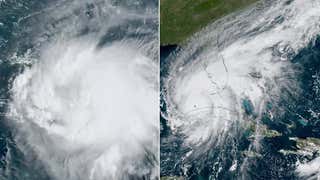

US
°C





Effluent from the Palo Alto Regional Water Quality Control Plant is discharged into a nearby wetlands.
(Palo Alto Regional Water Quality Control Plant )
The process relies on "blue energy."The idea is specifically targeted at wastewater plants along coastlines.The new battery could make the plants energy independent and immune to blackouts.
A battery that runs on electricity created by mixing freshwater and ocean water could be used by coastal wastewater treatment plants to generate their own power, according to researchers at Stanford University.
The process relies on which is created when freshwater and saltwater are combined in certain ways, according to the Electrochemical Society.
The Stanford researchers, who recently published a in the journal ACS Omega, say they've figured out a way to harness that energy and use it to power wastewater treatment plants. Their idea is specifically targeted at wastewater plants along coastlines. The treated freshwater discharge from the plant would be mixed with saltwater from nearby oceans, bays or other bodies of water.
“Blue energy is an immense and untapped ,” study coauthor Kristian Dubrawski, a postdoctoral scholar in civil and environmental engineering, said in a press release. “Our battery is a major step toward practically capturing that energy without membranes, moving parts or energy input.”
(MORE: More Flesh-Eating Bacteria Cases in the Gulf of Mexico and Elsewhere Are Likely Because of Climate Change)
The researchers tested a prototype of the battery using wastewater effluent from the Palo Alto Regional Water Quality Control Plant and seawater collected from Half Moon Bay. The battery materials were 97 percent effective.
They said the technology could be used in any scenario where freshwater and saltwater mix, but wastewater treatment plants would especially benefit. Not only is the process of treating wastewater energy-intensive, accounting for about 3 percent of the total electric load in the U.S., it's also vulnerable to power outages.
The new battery could make treatment plants energy independent and immune to blackouts.
The Stanford project isn't the first attempt to harness blue energy, but it is the first time it's been done with a battery vs. osmosis or other more expensive and more complicated processes.
“It is a scientifically elegant solution to a complex problem,” Dubrawski said. “It needs to be tested at scale, and it doesn’t address the challenge of tapping blue energy at the global scale – rivers running into the ocean – but it is a good starting point that could spur these advances.”












